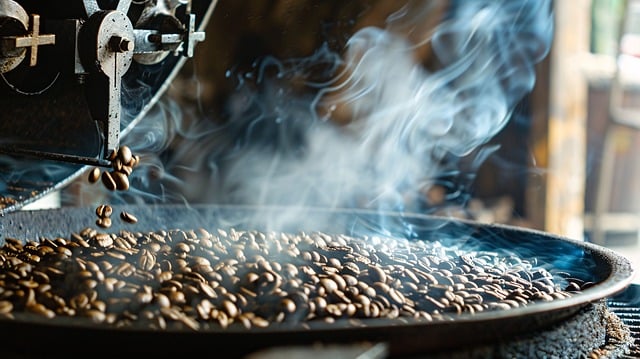Coffee, the warm drink that helps us wake up in the morning, the perfect afternoon pick-me-up, and the ideal sipping experience while we binge our favourite TV show or play our favourite Trustly casinos, comes in many varieties from various places around the world. This variety has led to many debates over which coffee bean, blend, or region delivers the best coffee. In fact, this question is asked so often that many people have experimented, tasted, and rated varieties from across the globe in hopes of finding an answer.
From these dedicated answer-seekers, we can glean that some coffees are superior to the rest, and that these seven are often considered the best. The prices and often limited availability reflect the coffees’ superiority, but if you can get your hands on them, you won’t regret it. While most of these varieties can be bought and brewed at home, many coffee connoisseurs worldwide believe the best way to explore them is to travel to where they originate. By doing this, you can try them as fresh as possible and gain a deeper appreciation for the growing conditions and roasting processes that create these delectable flavours.
1. Jamaican Blue Mountain Coffee
Jamaica’s Blue Mountain Coffee is reputed to deliver mild, low-acidity coffee with fruity and chocolatey notes that are simply delicious. As the name suggests, the coffee grows in the country’s Blue Mountain region and is available only in limited quantities due to its strict regulations and limited growing regions. The mountains provide a unique microclimate that delivers the coffee’s distinct flavour. The coffee fruit is handpicked and carefully processed to ensure that only the best fruit proceeds to the drying process.
These factors combine to create a hefty price tag for the beans, which can range from $45 to $50 per pound.
2. Indonesian Civet Coffee
Indonesia’s expensive and controversial Civet Coffee is a highly sought-after variety with a unique production process involving (yikes!) animal faeces. Civets, cat-like Indonesian animals, love to snack on the fruit of coffee trees in the region. The animals then expel the fruits’ undigested beans. These beans are then collected, washed, and roasted to produce an earthy coffee with undertones of caramel and chocolate. A cup of Indonesian Civet Coffee, also known as Kopi Luwak, can range from $35 to $100.
The controversy isn’t about consuming coffee from faeces, as one might expect, but rather the growing mistreatment of civets to produce larger quantities of the popular beans.
3. Hawaiian Kona Coffee
The nutrient-rich, volcanic soil of Hawaii produces a fertile growing region for coffee trees, which has led to the popularity and appreciation of Hawaii’s Big Island Kona coffee. The coffee is grown in a 30-mile region known as the Kona Coffee Belt on the volcanoes of Hualalai Mountain and Mauna Loa. The beans produced here deliver a sweet flavour profile with hints of honey, fruit, brown sugar, and chocolate. There are multiple coffee producers in the region, leading to various purchasing options at varying price points, some of which include beans from regions beyond Kona.
4. Panamanian Geisha Coffee
Another sought-after type of coffee that benefits from the high altitudes and nutrient-rich soils of volcanic regions is Panama’s Geisha (sometimes spelt Gesha) coffee. The area’s unique climate produces coffee known for its citrusy and floral flavours, most notably for hints of tangerine, bergamot, jasmine, and lavender in each sip. The unique flavour can cost up to $160 per pound.
5. Guatemalan Finca el Injerto Coffee
Cultivated on a family-operated farm since the beginning of the 1900s, Guatemala’s Finca el Injerto coffee delivers several varieties known for their richness and depth of flavour. The flavours were born from a mission to learn different coffee production processes from around the world and to prioritise quality above all else.
6. Tanzanian Peaberry Coffee
Peaberry coffee gets its name from the shape of the beans. Unlike most varieties, peaberries have a rounded shape reminiscent of a pea, resulting from the fact that only one bean is produced in the coffee cherry. Usually, two beans are produced, leading to each bean having a flat edge as the two develop side by side. The chance of just one bean growing is minimal, only 5 to 10 per cent, meaning that peaberry coffee requires a painstaking process of separating the peaberry beans from the others.
Many coffee aficionados believe that the single seed leads to a superior taste and quality coffee, and based on the popularity of Tanzania’s peaberry coffee, they’re likely on to something. Peaberry coffee beans can grow in various regions but all are known for offering sweeter flavours than other beans. However, Tanzanian varieties stand out for their rich notes of chocolate and blackcurrants.
7. Sumatra Mandheling Coffee
Another Indonesian coffee that has made a name for itself as one of the best coffee varieties is the Sumatra Mandheling Coffee, which is grown on the island of Sumatra. This coffee is renowned for its herbal, earthy scent and flavour. This variety has found its way into well-known brands’ offerings, including Starbucks. Sumatra Mandheling Coffee is also known for its versatility in delivering a robust, full flavour regardless of how it’s roasted or prepared, and it has become a popular option for cold brew coffees or espresso shots.
Conclusion
Whether derived from the climates of Central America, Africa, or Asia, these coffees offer unique flavour profiles that set them apart from the rest. Time and again, they’ve impressed coffee connoisseurs, earning them recognition as some of the best coffees in the world.



